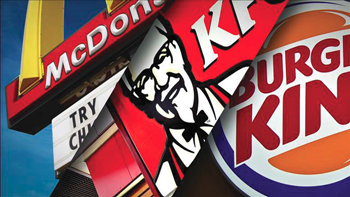Marketing aggravates obesity in Black children
By Jazelle Hunt -NNPA Washington Correpondent- | Last updated: Sep 1, 2015 - 10:57:26 PMWhat's your opinion on this article?

|
“We see more of this in our community in general … in the placement of billboards in our community, [and] the fact that there’s less of the healthier products in our community,” said Vikki Lassiter, executive director of the African American Collaborative Obesity Network at the University of Pennsylvania.
A report from the Rudd Center for Food Policy and Obesity at the University of Connecticut details how this aggressive advertising is magnifying the obesity epidemic. And although companies are pursuing Latino children and teens most aggressively (in terms of dollar amount), Black children and teens have the highest levels of exposure to ads for processed foods. Candy and gum brands in particular increased their Black-targeted advertising spending by 39 percent, amounting to approximately $140 million.
The report examines all restaurant, food, and beverage companies with $100 million or more in advertising spending in 2013—a total of 26 companies, representing a few hundred brands. It also includes all of the companies participating in the Children’s Food and Beverage Advertising Initiative, which pledges to only advertise their healthier choices in child-targeted media.
These companies represented 75 percent of all food-related advertising on Black networks—and less than one percent of it was for healthy products. In addition, Black children are getting a “double-dose” of these ads.
“The double-dose relates to the fact that mainstream media is something that Black and Latino children are definitely watching, but then there’s targeted advertising/marketing to Black TV networks,” Ms. Lassiter said.
Even without the double-dose, Black children have the highest levels of exposure to ads for processed and junk food, viewing 70 percent more food-related TV ads than their White peers.
The nation’s demographic changes are a primary reason for the level of this targeted marketing. There’s also the general marketing technique of exposing people to the product when they are young to create lifelong preference and loyalty spending. But Black kids have their own particular appeal.
“Then you have the other piece of it, in terms of, urban communities and Black youth being trendsetters,” Ms. Lassiter explained. “Marketers … want to test things out first with Black youth to see how that might trend out.”
Among the 267 most-advertised brands of these 26 companies, only one healthy brand—Yoplait Light—was advertised to Black people.
“There’s this disconnect … when you look at how some of these companies will support athletic events, or concerts to bring community togetherness, yet in the same regard they have more of their products that are unhealthy throughout that same community,” Ms. Lassiter pointed out.
“One thing that’s important is for children to have an understanding of what marketing is—the fact that this message is purposely meant to influence you, that not everything is meant to be taken at face value. That if you drink soda, you’re not going to be living the life,” she explained.
She also recommends that parents talk about nutrition and their purchase choices while grocery shopping, to help young people understand what they are putting in their bodies.
INSIDE STORIES AND REVIEWS
-
-
About Harriett ... and the Negro Hollywood Road Show
By Rabiah Muhammad, Guest Columnist » Full Story -
Skepticism greets Jay-Z, NFL talk of inspiring change
By Bryan 18X Crawford and Richard B. Muhammad The Final Call Newspaper @TheFinalCall » Full Story -
The painful problem of Black girls and suicide
By Charlene Muhammad -National Correspondent- » Full Story -
Exploitation of Innocence - Report: Perceptions, policies hurting Black girls
By Charlene Muhammad -National Correspondent- » Full Story -
Big Ballin: Big ideas fuel a father’s Big Baller Brand and brash business sense
By Bryan Crawford -Contributing Writer- » Full Story






 Click Here Stay Connected!
Click Here Stay Connected!








